Birds are a diverse and fascinating animal group that has filled the skies of Monagas and other parts of the world for millennia.
Monagas is home to an incredible array of species, ranging from the brightly-colored hummingbirds of the tropical forests to the majestic raptors that soar above the savannahs. The area is home to various habitats, allowing a wide range of birds to be found here.
From shorebirds to seabirds, Monagas has something for every bird enthusiast. Whether you are a novice or an experienced birder, Monagas will surely delight you with its abundance of avian life.
9 Birds to Watch in Monagas
If you are a bird lover, you might visit Monagas, a state in northeastern Venezuela that boasts a rich diversity of avian life.
Monagas have a variety of habitats, from tropical forests and savannahs to wetlands and coastal areas, that support hundreds of bird species, some of which are endemic or endangered.
Here are nine birds that you can watch in Monagas.
1. Black-bellied Whistling Duck
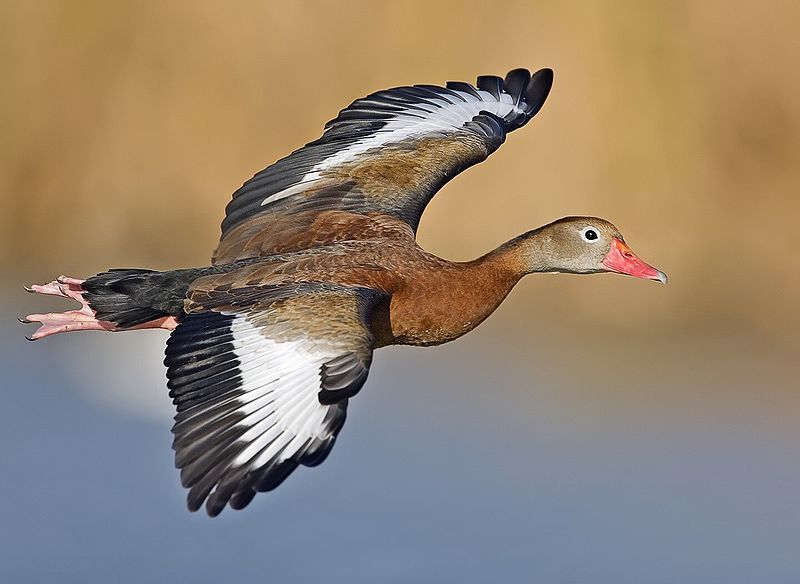
The black-bellied whistling duck is a species of duck initially known as the black-bellied tree duck. This duck species was mainly found in the United States, Mexico, and tropical Central and South America before 2000.
Today, it can be found in much of the United States year-round. This duck species is known for its distinct whistling call, so it was named the black-bellied whistling duck.
It is a medium-sized bird with a black belly and can be seen in wetlands, ponds, and other water bodies. It is a highly social species and can often be found in large groups. It feeds mainly on aquatic plants, small invertebrates, and seeds.
The black-bellied whistling duck is a protected species in the United States and many other countries, and its conservation status is listed as Least Concern on the International Union for Conservation of Nature’s Red List.
| Kingdom | Animalia |
| Phylum | Chordata |
| Class | Aves |
| Order | Anseriformes |
| Family | Anatidae |
| Genus | Dendrocygna |
| Species | D. autumnalis |
2. Blue-winged Teal
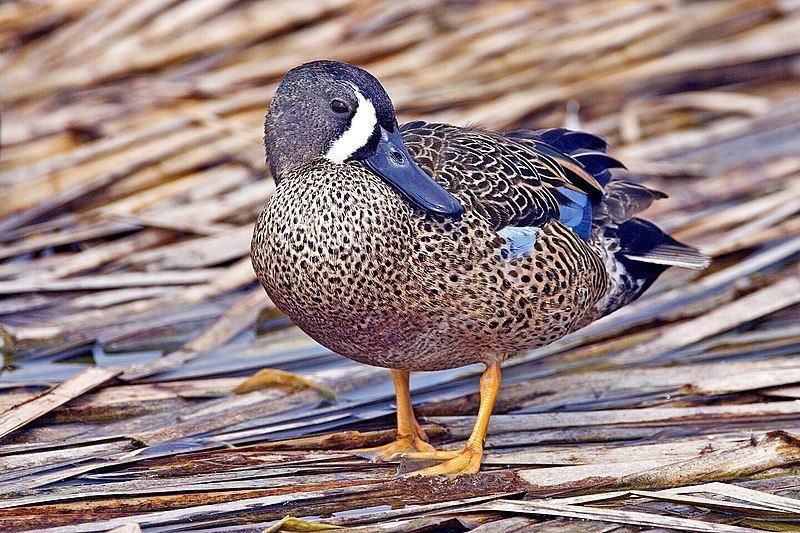
The blue-winged teal is a species of bird within the Anatidae family, which includes ducks, geese, and swans. It is one of the smaller members of the dabbling duck group, a classification of ducks that feed in shallow water.
This particular species can be found in North America and breeds from as far north as southern Alaska to Nova Scotia and as far south as northern Texas. It is a migratory bird, meaning it can move from one region to another to find food and other resources.
The blue-winged teal is an essential species for the environment of North America, as it helps to maintain the balance of the surrounding habitats. It also plays a role in the local food chain, as it is a food source for many animals.
| Kingdom | Animalia |
| Phylum | Chordata |
| Class | Aves |
| Order | Anseriformes |
| Family | Anatidae |
| Genus | Spatula |
| Species | S. discors |
3. Crested Guan
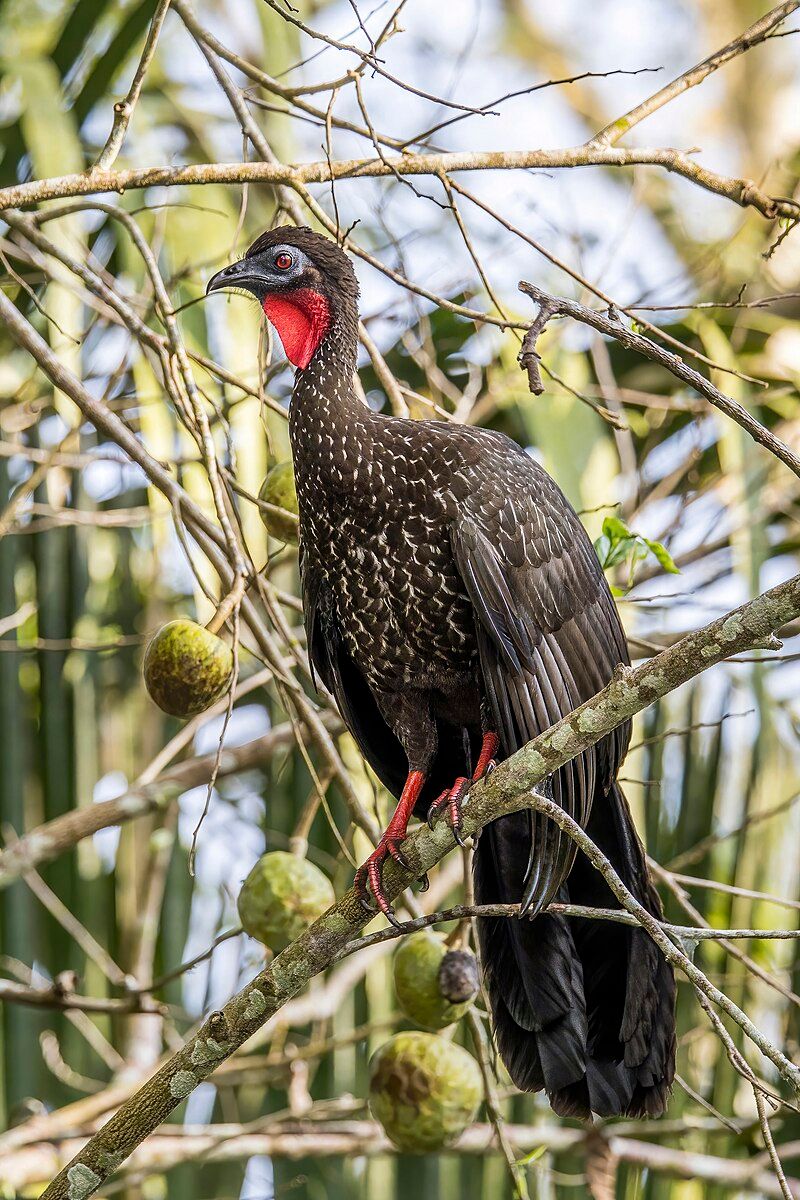
The crested guan is a species of bird belonging to the family Cracidae. This family is an ancient group of birds closely related to the Australasian megapodes, or mound-building birds.
The crested guan is found in the Neotropics, a region comprising Mexico, Central America, the Caribbean, and the southern tip.
The habitat of the crested guan generally consists of lowland forests, and its range extends from southern Mexico and the Yucatán Peninsula to western Ecuador and south Venezuela.
The crested guan is a relatively large bird with a body length of around 52 cm and a wingspan of around 80 cm. It has a blackish-brown body, a white throat, and a crest of black feathers on its head.
The feathers on its wings are primarily black but have some white and red patches. The long tail of the crested guan is black, with white tips.
| Kingdom | Animalia |
| Phylum | Chordata |
| Class | Aves |
| Order | Galliformes |
| Family | Cracidae |
| Genus | Penelope |
| Species | P. purpurascens |
4. Fulvous Whistling Duck
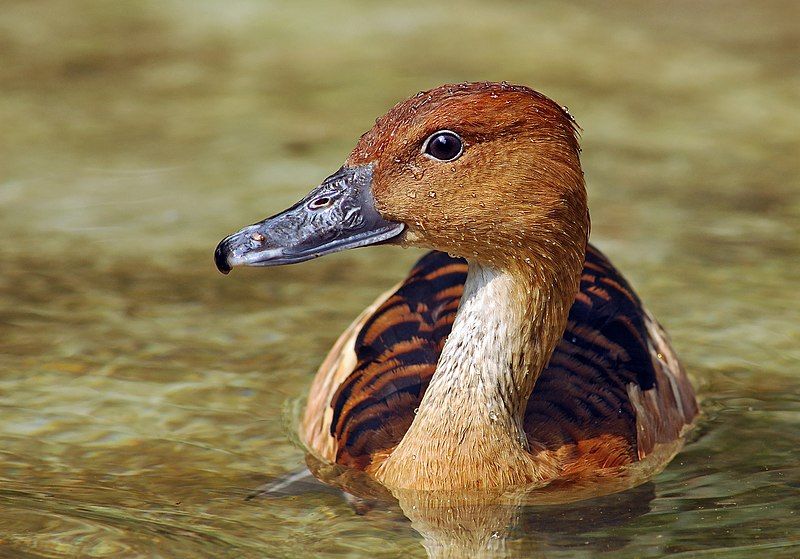
The Fulvous Whistling Duck, also known as the Fulvous Tree Duck, is a species found across the world’s tropical regions. It can be found in Mexico and South America, the West Indies, the southern United States, sub-Saharan Africa, and the Indian subcontinent.
This species of duck is a whistling duck, meaning that its call is a loud, high-pitched whistle and can often be heard from a distance. Fulvous Whistling Ducks have a distinctive coloring; they are light brown with dark brown barring on the sides of their body.
They have bright yellow eyes and a short, light-colored bill with a blackish tip. They have long legs, which allow them to wade in shallow water to find food. Fulvous Whistling Ducks are social birds and live in small flocks.
They feed mainly on aquatic plants but also take small fish, insects, and crustaceans. They are primarily found in shallow wetlands, such as marshes, swamps, and flooded fields. These ducks are classified as Least Concern on the IUCN Red List of Threatened Species.
Despite this, their population is still decreasing in some areas due to habitat loss and hunting. Their habitat must be protected to ensure the survival of this species.
| Kingdom | Animalia |
| Phylum | Chordata |
| Class | Aves |
| Order | Anseriformes |
| Family | Anatidae |
| Genus | Dendrocygna |
| Species | D. bicolor |
5. Lesser Scaup
The lesser scaup is a small, migratory duck native to North America. It has a short, blue bill, colloquially known as the little bluebill or broadbill.
During the winter, the lesser scaup will migrate south as far as Central America to find warmer climates. This bird is common in wetlands, lakes, and coastal areas.
The lesser scaup is a diving duck, which means it will submerge itself in the water to feed on insects, crustaceans, and mollusks. It can also be seen eating small fish, aquatic plants, and seeds.
The lesser scaup is essential for its role in maintaining healthy wetland ecosystems and beauty.
| Kingdom | Animalia |
| Phylum | Chordata |
| Class | Aves |
| Order | Anseriformes |
| Family | Anatidae |
| Genus | Aythya |
| Species | A. affinis |
6. Masked Duck
The masked duck is a small avian species native to the tropical regions of the Americas. It is known for its stiff tail feathers, which stand out in comparison to the more flexible feathers of most ducks.
The masked duck is usually a dull gray or brown with a light-colored mask around its eyes. It is found in various habitats, including open fields, wetlands, and marshes. It is a very active species, often found preening, swimming, and foraging.
The masked duck is also a highly social species often found in large groups. They are omnivorous and feed on various insects, fish, and plant material.
The masked duck is an essential species in its habitat, helping to disperse seeds and control insect populations.
| Kingdom | Animalia |
| Phylum | Chordata |
| Class | Aves |
| Order | Anseriformes |
| Family | Anatidae |
| Genus | Nomonyx |
| Species | N. dominicus |
7. Muscovy Duck
The Muscovy duck is a species native to the Americas, ranging from the Rio Grande Valley of Texas and Mexico to Argentina and Uruguay. This species of duck has also been introduced to other countries in the form of feral populations.
Feral Muscovy ducks have been found in New Zealand, Australia, and Central and Eastern Europe. Muscovy ducks are known for their distinct physical characteristics, such as their large size, long neck, and broad wings.
They are also known for their large webbed feet, which help them to swim quickly. Regarding diet, they mainly feed on grasses, aquatic insects, and other small invertebrates. The Muscovy duck is an essential species in many parts of the world.
In some areas, they are hunted for meat, while in others, they are used for eggs and feathers.
They can also be seen as a source of entertainment due to their ability to fly and amusing behaviors. Overall, the Muscovy duck is an essential duck species, both in its native range and in other countries where they have been introduced.
Their presence provides benefits to the local ecology, as well as providing food and entertainment to humans.
| Kingdom | Animalia |
| Phylum | Chordata |
| Class | Aves |
| Order | Anseriformes |
| Family | Anatidae |
| Genus | Cairina |
| Species | C. moschata |
8. Rufous-vented Chachalaca
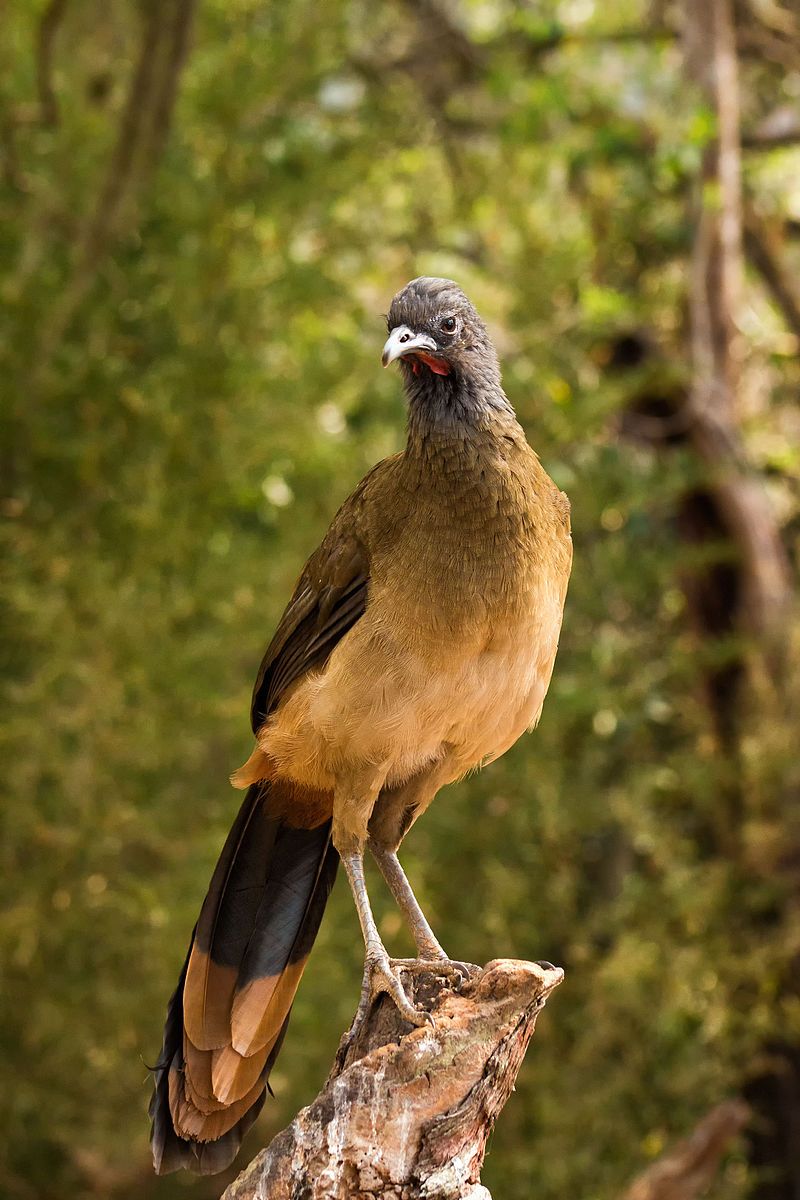
The rufous-vented chachalaca is a bird species found in Mexico, Central America, and parts of South America. It is part of the family Cracidae, a group of birds belonging to the same evolutionary branch as the Australasian mound builders.
The rufous-vented chachalaca belongs to a group of birds believed to have existed since the Miocene epoch, around 23 million years ago.
This ancient bird family is considered the ancestor of many other bird species, including the Australasian mound builders. The Australasian mound builders are a group of birds that build their nests in mounds of vegetation and earth.
They are found in Australia, New Guinea, and nearby islands. The rufous-vented chachalaca is an exciting example of a species whose evolutionary history is closely intertwined with that of another bird species.
| Kingdom | Animalia |
| Phylum | Chordata |
| Class | Aves |
| Order | Galliformes |
| Family | Cracidae |
| Genus | Ortalis |
| Species | O. ruficauda |
9. White-cheeked Pintail
The white-cheeked pintail is a species of dabbling duck known as the Bahama pintail or summer duck. It was first described by the Swedish naturalist Carl Linnaeus in his landmark 10th edition of Systema Naturae in 1758.
This book was considered one of the first modern zoological works, including the species’ current scientific name.
The white-cheeked pintail is native to the Caribbean, Central, and South America and is a migratory species found in parts of the United States during the summer months.
They are commonly found in shallow freshwater wetlands such as ponds, marshes, and lakes.
The white-cheeked pintail has a distinctive white face and chestnut-brown body, making it easily recognizable. It is a medium-sized duck that feeds primarily on aquatic plants, insects, and other invertebrates.
This species is not considered to be threatened, and its population is supposed to be stable.
| Kingdom | Animalia |
| Phylum | Chordata |
| Class | Aves |
| Order | Anseriformes |
| Family | Anatidae |
| Genus | Anas |
| Species | A. bahamensis |
Conclusion
Birds in Monagas are a vital part of the local ecosystem, providing a range of essential functions, such as pollination and pest control.
Their presence helps ensure the local environment’s health, making them an invaluable part of the region’s biodiversity. With conservation efforts in place, these birds will continue to enrich the Monagas region for many years.